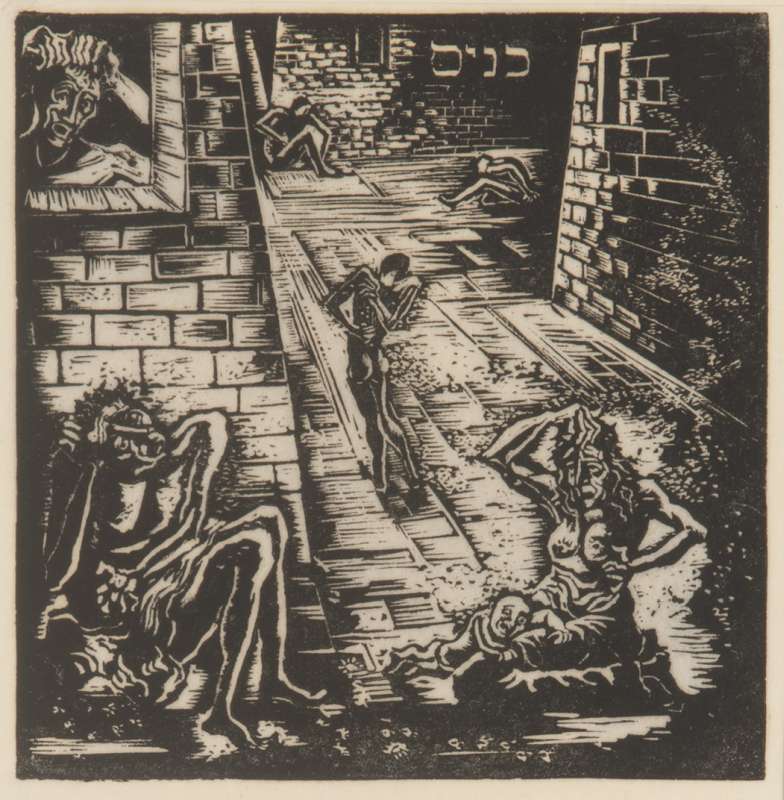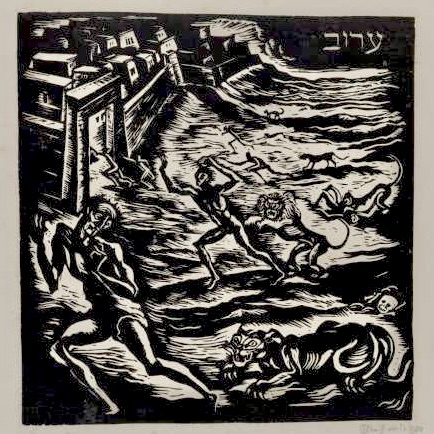Torah Study Date
Saturday, June 10, 2023
Verses Covered
Exodus (Sh’mot) 8:1-8:15
Next Session
Saturday, June 17, 2023
Starting at Exodus 8:16
Last week, we discussed the plague of frogs. First, we noted that YHVH speaks to Moses and tells him to speak to Aaron and tell him what to do (instead of YHVH just speaking directly to Aaron). This fits Rabbi Sara’s interpretation according to which the story attempts to make the two groups–the Moses group and the Aaron group–one unit. Rabbi Sara also mentioned that Moses is a prophet and Aaron is a priest (and a good prophet, who speaks directly to God, is not necessarily a good priest). Umberto Cassuto (1883-1951), Italian scholar of Torah,
We discussed the different ways interpreters divide the plagues into groups. Alter divides them into three’s and x divides them into twos. Alter says there are three triads, each having the formal pattern outside in the morning-in Pharaoh’s palace-disaster unleashed without warning followed by the climactic and devastating tenth plague. Umberto Cassuto (1883-1951), Italian Torah scholar, divides the pairs into two involving the Nile, two insect plagues, two epidemics affecting beasts and humans respectively, two devastating the crops, and darkness paired with the death of the firstborn. R. Sara pointed out that the two ways of dividing fit well together since three’s are Israelite and two’s are Egyptian (we saw many two’s in the Joseph story).
We discussed the plague of frogs, that Pharaoh’s sorcerers were able to replicate it, and that Pharaoh asks Moses and Aaron to plead with YHVH: to remove the frogs from me, remove them from my people, and then I will let the Israelites go to sacrifice to YHVH. R. Sara noted that his first concern is with himself, then with his people, and then with letting the other people, the Israelites, go. We noted Moses letting Pharaoh have that triumph over him (of the frogs departing) but that he would do it at the specific time Pharaoh asks (so it would be evident that the cessation was not a natural phenomenon but that YHVH had done it). The frogs cease–and then what remains is heaps and heaps of dead, stinky frogs. We noted that Pharaoh may have won a triumph but that it isn’t really helping him (to have heaps and heaps of dead frogs around). We noted that when Pharaoh saw that there was relief, he hardened his heart and did not let the Israelites go, just as YHVH had said.
We then began discussing the plague of lice, in which dust becomes lice, and the sorcerers, unable to make lice out of dust, saying it must be a god who did it (R. Sara pointing out that it ought to be “a god” not “God”—that they are recognizing a divine source for the transformation but not recognizing the specific god of the Israelites). We noted the macabre parallel between the creation of human beings out of the dust in Genesis and the creation of lice out of dust in Exodus.
Our artwork this week is two pieces from German-Israeli painter and woodcut artist, Jacob Steinhardt (1887-1968)’s Ten Plagues, Lice (above), and Wild Beasts (below). The expressionist woodcut of the plague of lice aptly portrays what it would be like to experience such a plague—each person is preoccupied with scratching and nothing else, they’re isolated and miserable, and their existence is dark. Steinhardt was director of Jerusalem’s Bezalel Academy of Arts and Design in the 50s and, prior to that, head of Bezalel’s graphics program.


